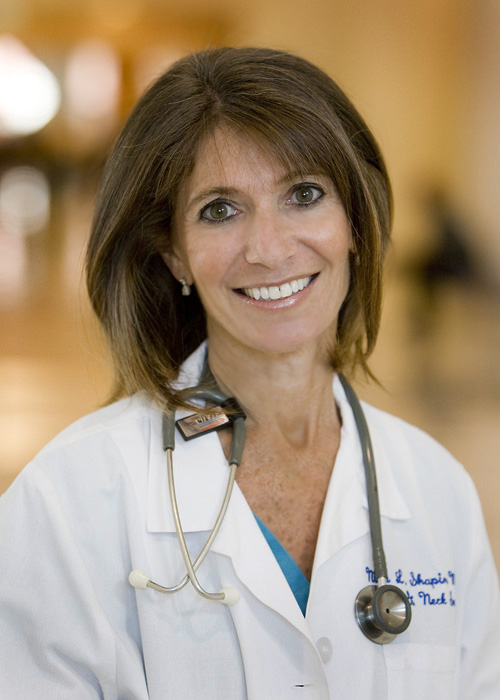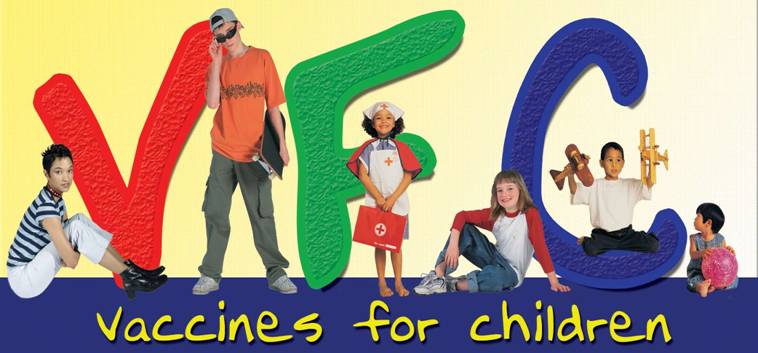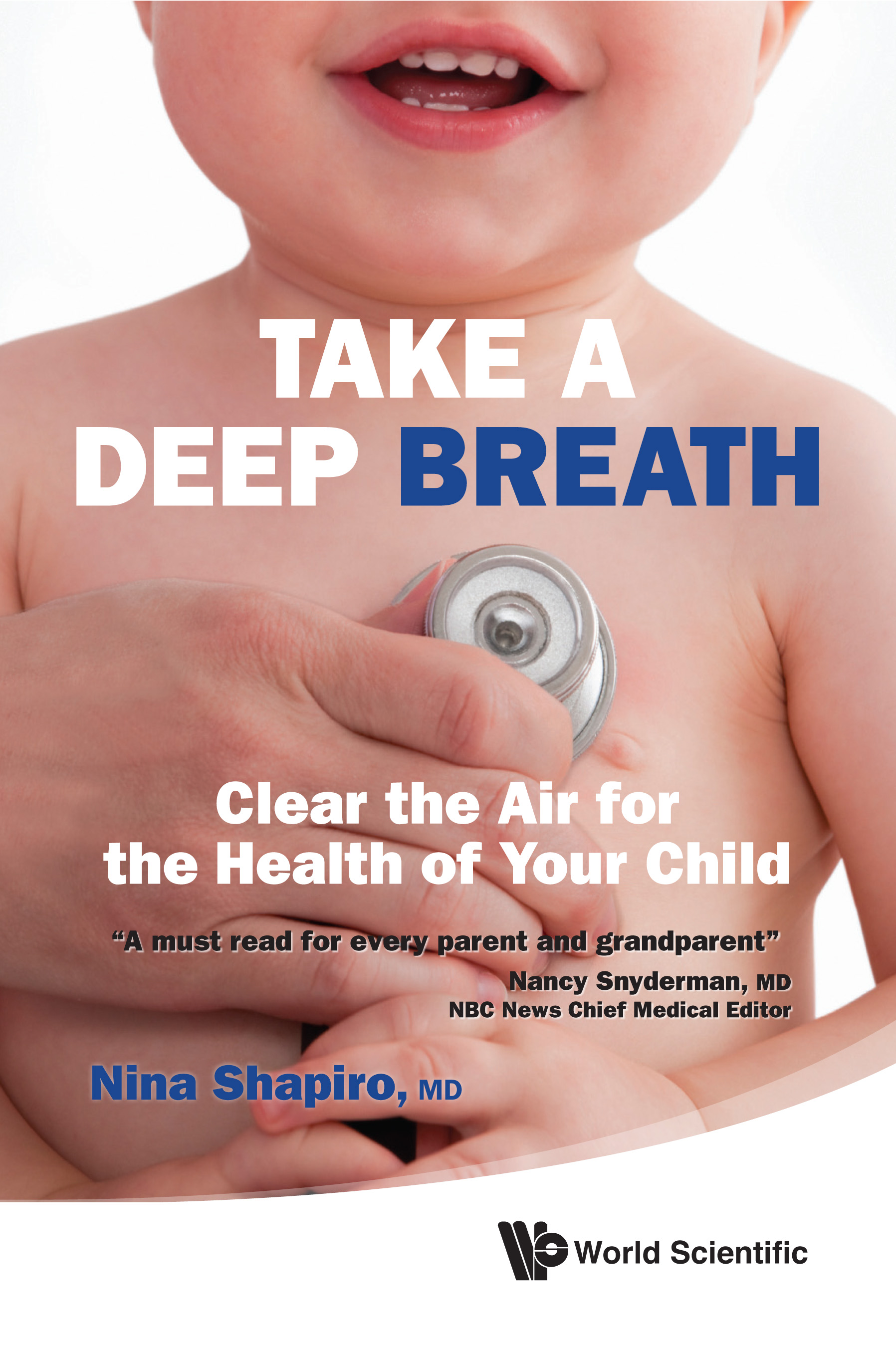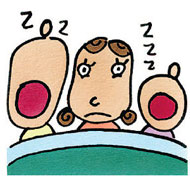Posts Tagged ‘Dr. Nina Shapiro’
posted by AJGpr |
on health, parenting |
Data shows the anti-vaccination movement spreading to places like Malibu and Boulder — so Salon’s political reporter, Alex Seitz-Wald sought out AJGpr client, Dr. Nina Shapiro for some answers. Here is his article that appeared in Salon.com on Wednesday, August 13. 2013.
You may not immediately peg the woman in yoga pants sipping Kombucha outside Whole Foods as a science-denier, but she might be. The anti-vaccination movement, which posits — in the face of overwhelming empirical research — that vaccines cause autism and other diseases, seems to be picking up steam in many of the country’s wealthier, educated enclaves where parents are interested in living “natural” lifestyles.
“It’s a little bit cool, it’s a little bit of a trend,” says Nina Shapiro, a professor at UCLA medical school and mother of two who wrote an Op-Ed in the Los Angeles Times this weekend about her growing concern with the anti-vax movement.
It’s certainly true of the anti-vaccination’s most prominent voices, like actress Jenny McCarthy, who was just hired to a spot on “The View,” and environmentalist Robert Kennedy Jr.
“It’s that whole natural, BPA-free, hybrid car community that says ‘we’re not going to put chemicals in our children,’” Shapiro told Salon. “It’s that same idea: ‘I’m going to be pure and I want to keep my child pure.’”
California law mandates that all students get vaccinated, but it also makes it easy to get exemptions for personal beliefs. And parents in tony places like Marin County are taking advantage of it in seemingly growing numbers. One public elementary school in Malibu, an affluent beach town just north of Los Angeles, reported that only 58 percent of their students are immunized — well below the recommended 90-plus percent level — according to Shapiro.
And it’s even worse in some of L.A.’s private schools, where as few as 20 percent of kids are vaccinated in some schools. “Yes, that’s right: Parents are willingly paying up to $25,000 a year to schools at which fewer than 1 in 5 kindergartners has been immunized against the pathogens causing such life-threatening illnesses as measles, polio, meningitis and pertussis (more commonly known as whooping cough),” she wrote.
Shapiro’s Op-Ed provoked such heated discussion among the Times’ readers that the Southern California paper devoted a second item just to the reaction.
Joel Stein wrote in Time magazine a few years ago about his disagreement with his wife over vaccinating their children — he wanted to, she didn’t. Her view was “not unique,” he wrote, “at least not in the liberal, wealthy part of L.A. where we live.”
But it’s not just California. Public health officials see large clusters of unvaccinated children in latte-drinking enclaves everywhere, like Ashland, Ore., and Boulder, Colo., where close to 30 percent of children are exempted from one vaccine or another. In some schools in Ashland two-thirds of the students have exemptions, according to Mark Largent, a James Madison College professor who wrote a book about the vaccine debate last year.
And new data out this month from the Centers for Disease Control shows what Paul Offit, a pediatrician at Children’s Hospital of Philadelphia, calls a disturbing uptick in the number of children forgoing vaccinations. “For the first time ever, there are a handful of states which now have people who are choosing not to get vaccines at the greater than 5 percent level, which is a problem. That’s where you’re going to start to see some of these diseases coming back. And you’re already seeing it with whooping cough and other diseases,” he told Salon. Indeed, the anti-vaccination movement was blamed for helping cause the worst whooping cough epidemic in 70 years.
The states above 5 percent include Michigan, Vermont, Idaho and Oregon. Illinois barely missed the cut at 4.8 percent. The national median is 1.8 percent, with many states below 1 percent, making Vermont (5.7 percent) and Oregon (6.4 percent) more than three times above the national average.
Offit, a prominent skeptic of alternative medicine and pro-vaccination author, explained that high education levels can enhance, rather than deter, anti-vax beliefs. “They’re people who believe that they can know anything and know as much as their doctor — if not more — by simply studying it, reading about it,” he said. Many of these people, he added, are used to being in control of their lives and at their jobs and want to control this aspect of their lives as well.
Science writer Chris Mooney has written that vaccine denialism “largely occupies the political left,” though he later walked that back in light of polling data and pushback from Kevin Drum, David Frum, Andrew Sullivan and others, who pointed out that shopping at Whole Foods does not necessarily make you a liberal. And in Congress, the anti-vax movement is represented by Republicans.
And there’s some evidence to suggest that vaccine denialism is gaining strength on the far-out libertarian fringe of the right, where people like Michele Bachmann, Alex Jones and others have spoken out against what they see as a totalitarian mandate from the government to inoculate your children. That might help explain the presence of Idaho on the CDC list, and the fact that the data show the largest increases in non-medical exemptions came from Georgia and West Virginia.
posted by AJGpr |
on parenting, print media |
With fewer vaccinations, is your child’s school safe?Too many parents are seeking exemption from California’s vaccination law.
Across the country, preschools and elementary schools are declaring themselves nut free or peanut free, asking families not to pack lunch foods that could pose life-threatening dangers to highly allergic children. And the prohibitions are expanding beyond nuts. Some schools, for example, have prohibited powdered cheese products to protect children who are especially dairy sensitive.
These measures may be excessive, but as a physician, I understand the desire to protect students. Children with serious allergies really can have severe reactions to trigger foods, so it’s not that surprising that some schools have reacted aggressively.
But the great bulk of children face a far greater risk of harm from disease. If the goal is really to protect children, I’d like to see all schools declared “unvaccinated-free zones.”
The law in California mandates that students in public and private schools be immunized, but it also allows easy-to-get exemptions for personal beliefs.
Although some 90% of the state’s kindergartners are up to date on their immunizations, it is not uncommon for individual public elementary schools to report that more than one-third of their kindergartners are not.
And if you’re thinking this must be a problem unique to schools in low-income neighborhoods, think again. One of Malibu’s three elementary schools reported that just 58% of its kindergartners were up to date on their vaccinations, and some other affluent areas throughout the state have schools with similar compliance rates.
Private schools vary widely, but some have rates of less than 20%. Yes, that’s right: Parents are willingly paying up to $25,000 a year to schools at which fewer than 1 in 5 kindergartners has been immunized against the pathogens causing such life-threatening illnesses as measles, polio,meningitis and pertussis (more commonly known as whooping cough). In order for a school to be considered truly immunized, from a public health standpoint, its immunization rate needs to be 90% or higher.
Parents have varied reasons for choosing not to immunize their children. Some are concerned that vaccinations raise the risk of autism, although study after study has debunked this myth. Others, concerned that small bodies can’t tolerate so many vaccines at once, have decided to spread out the schedule recommended by the American Academy of Pediatrics and the Centers for Disease Control and Prevention, though there is little evidence to support this practice. Some parents think that because some of the illnesses for which kids get immunized are extremely rare these days, there’s little reason to vaccinate.
But here’s the reality: These diseases do exist, and we’re already seeing some of them make a comeback.
When I was in medical school, pertussis was discussed primarily in the past tense. We learned about how whooping cough had taken the lives of many people in the 1930s, before a vaccine was available. It felt like ancient history. But now, pertussis has made a comeback in California and other states, causing severe illness in kids and adults. Children have died.
There is also a vaccine now to protect against Haemophilus influenzae type b, a bacterial disease that can cause severe respiratory illnesses, meningitis, eye infections, blocked breathing and even death. In the years after the vaccine was licensed in 1985, the disease was nearly eradicated, but now it’s back too.
Dr. Jonas Salk, creator of the polio vaccine, spoke at my medical school graduation. Polio killed millions and paralyzed millions more, but thanks to Salk and Albert Sabin, whose vaccine came soon after Salk’s, we haven’t seen outbreaks in the U.S. since the 1950s.
It used to seem a sure bet that polio was gone for good in the United States and would soon be eradicated everywhere. In 2012, just 223 cases of polio were reported worldwide, all but six of them in the three countries where the disease remains endemic: Afghanistan, Pakistan and Nigeria. One barrier to complete eradication has been suspicion toward the vaccine in remote areas of those countries. It’s ironic that vaccine suspicion is now growing here as well.
It still seems likely we’ll win the war against polio. But it’s no longer looking all that certain with whooping cough, meningitis and measles, to name a few. They could be coming soon to a school near you.
Check vaccination rates at your child’s school.
posted by AJGpr |
on health, parenting, web |

Infant and Toddler Winter Illnesses
Why do newborns sound so congested? When should you worry about an infant’s cough? Are steroids really needed for a wheezy one year old? Does croup or bronchitis mean a child is more likely to develop asthma? Why do some toddlers have so many ear infections?
Nothing is more distressing to a parent than a young child’s illness. It may feel like one cold is hardly over before the next virus hits, and a cough or runny nose may seem like a chronic occurrence.
On Monday, February 18, 2013 at 12:00 pm EST, Dr. Nina Shapiro, Director of Pediatric Ear, Nose & Throat at UCLA School of Medicine, and the author of Take A Deep Breath: Clear the Air for the Health of Your Child., will explore the common respiratory illnesses encountered during a child’s early years, including colds, sinusitis, ear infection, strep throat, tonsillitis, flu, RSV, pertussis, croup, bronchitis and pneumonia.
She will review the symptoms of these common illnesses with a focus on treatments to manage the symptoms at home and when to worry or call the doctor. Young children typically encounter 5 to 10 colds or viral illnesses a year. The practical information shared by Dr. Shapiro in this webinar will come in handy for parents and caregivers of children from infancy through preschool.
Registration to this free expert speaker webinar is available to all interested parents and caregivers. You may distribute the registration link via email or social media.
posted by AJGpr |
on fitness, parenting |
Tonsillectomy Breakthrough
When does a recurring sore throat require a drastic treatment? AJGpr client, Dr. Nina Shapiro, the Director of Pediatric Otolaryngology and an Associate Professor at the David Geffen School of Medicine at UCLA was a guest on The Doctors to discuss if and when parents should consider scheduling a tonsillectomy for their child.
Watch this clip, where Dr. Shapiro demonstrates the older versus newer techniques for removing tonsils on The Doctors.
Dr. Shapiro is the author of Take A Deep Breath: Clear the Air for the Health of Your Child.
posted by AJGpr |
on health, parenting, tv |
Before the New Year, AJGpr client, Dr. Nina Shapiro, the Director of Pediatric Otolaryngology and an Associate Professor at the David Geffen School of Medicine at UCLA was a guest on the new Hallmark series – Home & Family — the topic — children and snoring. Here’s the clip.
Dr. Shapiro is the author of Take A Deep Breath: Clear the Air for the Health of Your Child.
posted by AJGpr |
on health, parenting |
AJGpr client, Dr. Nina Shapiro, the Director of Pediatric Otolaryngology and an Associate Professor at the David Geffen School of Medicine at UCLA says snoring can be caused by enlarged tonsils or adenoids that block the airways. If you don’t breathe properly at night, you don’t get enough oxygen to your brain.
Watch the segment on The Doctors here.
posted by AJGpr |
on health, parenting |
My client, Dr. Nina Shapiro, Director of Pediatric Otolaryngology and an Associate Professor at the David Geffen School of Medicine at UCLA has her say about parents choosing or not choosing to vaccinate their kids in a recent blog. Dr. Shapiro is the author of Take A Deep Breath: Clear the Air for the Health of Your Child.
“Nut-free”, “Peanut-free”, and the latest and greatest: “Nut sensitive”. The rage in preschools and elementary schools across the country is to protect our nut-challenged children from nut exposure, even if it means not exposing them to nuts in the same building or playground, to minimize their risk of life-threatening allergic reactions. Allergic concerns have expanded beyond nuts, to gluten and dairy, to the degree that some schools now prohibit ‘powdered cheese products’, to protect children who are especially dairy sensitive. Some schools are not ‘nut-‘ or ‘dairy’-free, but are merely ‘nut’ or ‘dairy’-sensitive. I hope that this means that they take special precautions, beyond just discussing the inner feelings and emotions of those ‘sensitive’ to certain foods.
Please don’t take any of this as sarcasm. I am fully aware that food allergies are bona fide, and when they occur to the point of danger, kids can die, or nearly die, from a severe food reaction. An elementary school girl recently died of a previously undocumented allergic reaction recently, while at school. So an institution’s decision to either ban or, well, ‘sensitize’, potential food allergens, for the greater good, becomes a public health issue, even on the small scale of a school’s microcosm. This is a good thing. By not sending your child to school with their favorite PBJ or cheese puff, you are protecting others. Not necessarily your nut-insensitive child, who happily gobbles powdery cheese products and peanut butter cups in the comfort of your BPA-free hybrid vehicle, but others. Your child’s sacrifice for the greater good is worth it; seeing a small friend go into anaphylactic shock can scar a tyke for life, not to mention the allergic child himself. And this protection of others is important. Equally important is teachers knowing and being re-certified in CPR (which, by the way, might have saved that elementary school girl, had it been initiated before paramedics arrived). Maybe even as important as getting immunized.
Is there a lunch table for the vaccine-sensitive? We promise not to serve nuts. I just wonder if schools would consider instituting ‘vaccine-free’ zones. You know, for the greater good? Just as we are protective of the nut-challenged from life-threatening reactions, what about protecting children from life-threatening illnesses? Public schools can mandate that all must be immunized, but do allow for exemptions, which are pretty easy to get. Many public schools report immunization rates of less than 50% of their students. Private and parochial schools can strongly encourage immunizations, but they cannot mandate that all must be immunized. Some private schools have immunization rates of less than 20%. Yes, that’s right a parent might pay $25,000 a year to a school where less than one in five of their classmates are immunized against life-threatening illnesses such as measles, polio, bacteria which cause meningitis, or pertussis (the one that causes whooping cough). In order for a school to be considered truly immunized, from a public health (or ‘greater good’) standpoint, that particular school’s immunization rate needs to be 90% or higher. Parents have varied reasons, primarily personal, why they choose not to immunize their children. Some parents are concerned about autism risk, even though all of the studies connecting the rise in autism with immunizations have been debunked. Some are concerned that their child’s body is too small to tolerate a large dose of so many vaccines at once, so they spread out the schedule recommended by the American Academy of Pediatrics (AAP) and the Centers for Disease Control (CDC) to create their own ‘tailor-made’ schedule. Some parents think that the illnesses kids are getting immunized against don’t exist anymore, so why bother getting immunized, since illnesses such as polio, measles, mumps, and tetanus have been eradicated anyway.
But here’s the reality: these diseases do exist, and we’re going to see more of them come back. I read about pertussis, the bacterium that causes whooping cough, when I was in medical school. We would learn about this horrible respiratory disease and how it afflicted and took the lives of so many of those poor shlubs from the 1930’s, who hadn’t figure out prevention yet. We would read about them as if they were some primitive Neanderthal tribe, barely able to put two sticks together to make fire. Occasionally a crusty old professor would tell tales of the ‘days of whooping cough’. Ho hum. Well, it’s back. Not so ho-hum anymore. The hundred-day cough, which became an outbreak in California and other states, resulted in many children dying. During the tail end of medical school, I saw H. flu infections, a bacterium that caused severe respiratory illnesses, meningitis, eye infections, and blocked breathing. The miracle of the vaccine for H. flu, which became widely used in 1999, nearly wiped it out. Until now. It’s back, too. Dr. Jonas Salk, the co-creator of the polio vaccine, spoke at my medical school graduation. Polio killed millions, and paralyzed millions more. Thank you, Jonas Salk, and your sidekick Albert Sabin. We haven’t seen polio outbreaks in the U.S. since the 1950’s, when Salk and Sabin’s vaccine began being given widely. Well, we haven’t seen outbreaks yet. We might have to wait until the immunization rates drop some more. But let’s hope not. Polio, whooping cough, meningitis, and measles, to name a few, are still out there – and they could once again be coming to a school near you.
posted by AJGpr |
on Uncategorized |
My client, Nina L. Shapiro, MD, FACS, FAAP Director, Pediatric Otolaryngology and Associate Professor of Surgery at the UCLA School of Medicine shares insights on how to avoid a painful summer in her feature article in Westside Today.
Dr. Shapiro is the author of Take a Deep Breath: Clear The Air For The Health Of Your Child (World Scientific, January 2012)
Here are her suggestions to avoid ‘swimmer’s ear.”
The joys of swimming, toned moms, and tired tykes. But, like with most things in life there is also a downside to this stellar summer exercise: swimmer’s ear. A seasonal nuisance for both children and adults “otitis externa,” or “outer ear infection” as it technically referred to, is oftentimes painful. But, there are some precautions that can be taken to minimize ones’ chances of suffering an earful of hurt.
Swimmer’s Ear is caused by swelling and irritation of the skin of the ear canal. What causes this skin to go bad? The bacteria, or fungus, growing rapidly thanks to the warmth, water and humidity of watery settings. When water gets trapped in the ear canal, bacteria that usually exist quietly in the skin begin to grow, as these organisms are nurtured by these moist environs, resulting in their multiplying, thus causing swelling and pain. Other common symptoms include itchiness; wet, sticky drainage from the ear; pain when touching the ear; and occasionally fever, hearing loss, or facial swelling and redness. Once these microbial critters are entrenched, the infection can spread to the rest of the outer ear and face, so treatment, an antibiotic or antifungal eardrop, prescribed by your doctor, is a necessity. It’s also best to stay out of the water until the infection clears.
So how can you and your family avoid going down this moisture-fed rabbit hole? Here are some tips.
1. When you get out of the water, get the water out.
When you or your tyke exits the pool, gently dry the outside of the ear with a towel. If your child hasn’t had any ear surgery, including ear tubes, it’s safe to use an over-the-counter alcohol-based eardrop, which helps absorb ear canal moisture after swimming. If it still feels like water is trapped, set a hair dryer on a low, warm setting, and gently dry the ear, holding the hair dryer at least six inches from the skin.
2. Water, water go away – you won’t be in my canal today.
If you or your kids like to wear earplugs, then make sure that they are properly fitted so that they can help cut out or down on water entry into the canal in the first place.
3. Key Tip: No Q-Tip
DO NOT use cotton-tipped applicators. These are actually the second most common culprits of “swimmer’s ear,” after swimming itself. While it feels like these implements “clean” the ear of wax, water, and debris, they actually strip the delicate ear canal skin of its protective lining, thus enabling the aforementioned critters to take hold. If you must ‘clean’ your kids ears, use the corner of a washcloth to rub away what you can see. When using a cotton-tipped applicator, you remove only a little bit of wax, and push the rest into the deeper part of the ear canal, which inevitably leads to a big pain in the…ear.
Remember what your mother, grandmother and great-grandmother said when grooming ears: “Nothing smaller than your elbow in your ear!”
posted by AJGpr |
on health, parenting |
Dr. Nina Shapiro, Director of Pediatric Ear, Nose, and Throat at the Mattel Children’s Hospital UCLA, and Associate Professor of Surgery at the David Geffen School of Medicine at UCLA speaks about her new book Take a Deep Breath: Clear The Air For The Health Of Your Child (World Scientific, January 2012) on WGAU.
posted by AJGpr |
on parenting, web |
Vicki Balint, who writes for Raising Arizona Kids thought she new plenty about newborn babies but she didn’t know that they are obligate nasal breathers, which means they cannot breathe through their mouths until they are around four months old. This she discovered when she read Dr. Nina Shapiro’s new book, Take a Deep Breath: Clear The Air For The Health Of Your Child (World Scientific, January 2012).
Dr. Shapiro is Director of Pediatric Ear, Nose, and Throat at the Mattel Children’s Hospital UCLA, and Associate Professor of Surgery at the David Geffen School of Medicine at UCLA.
Click here to read more of the review.
















